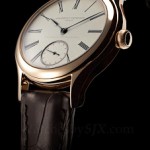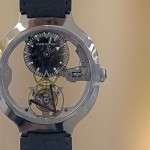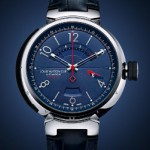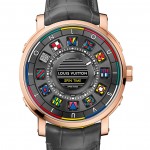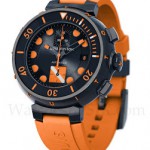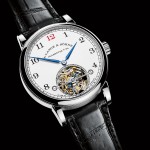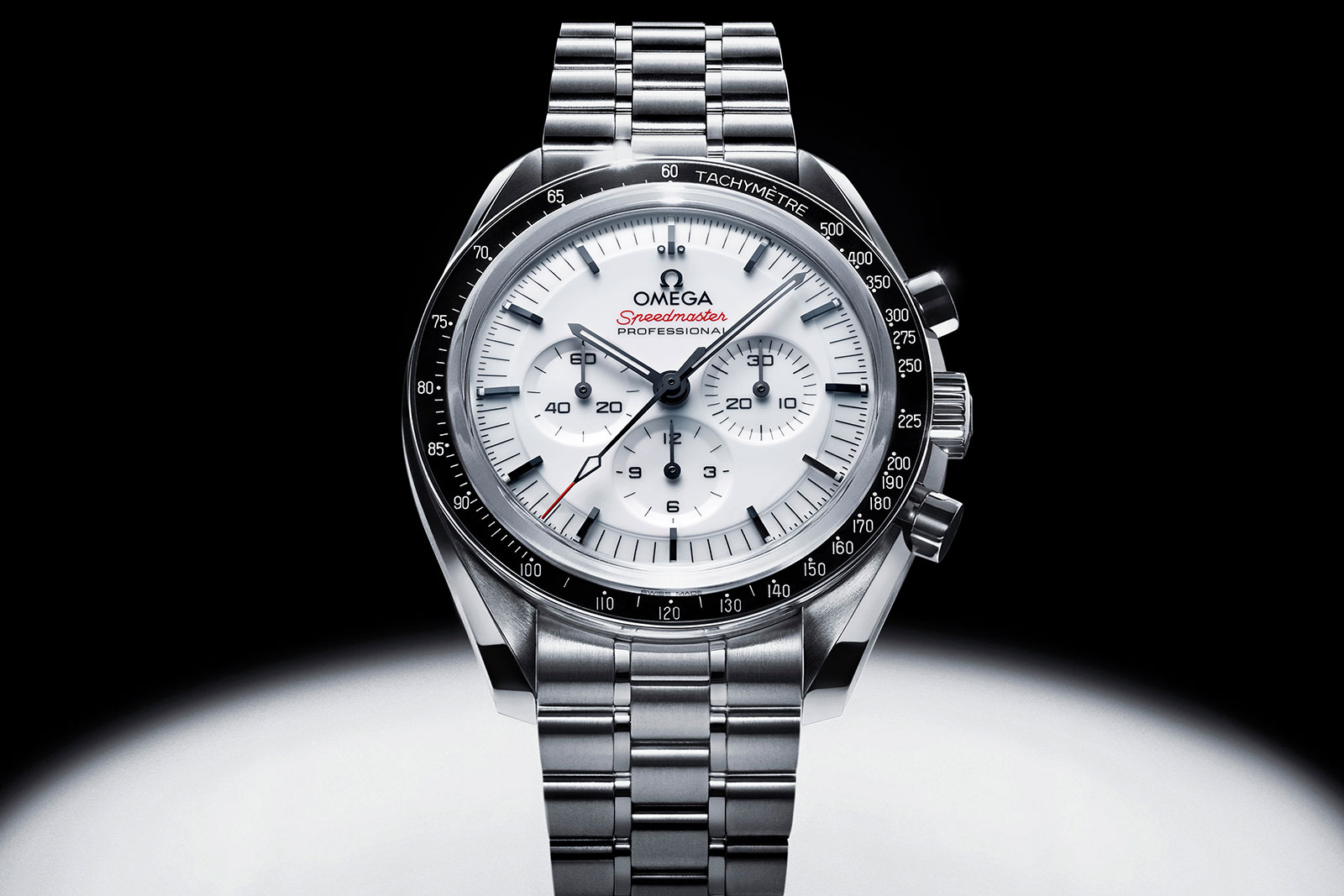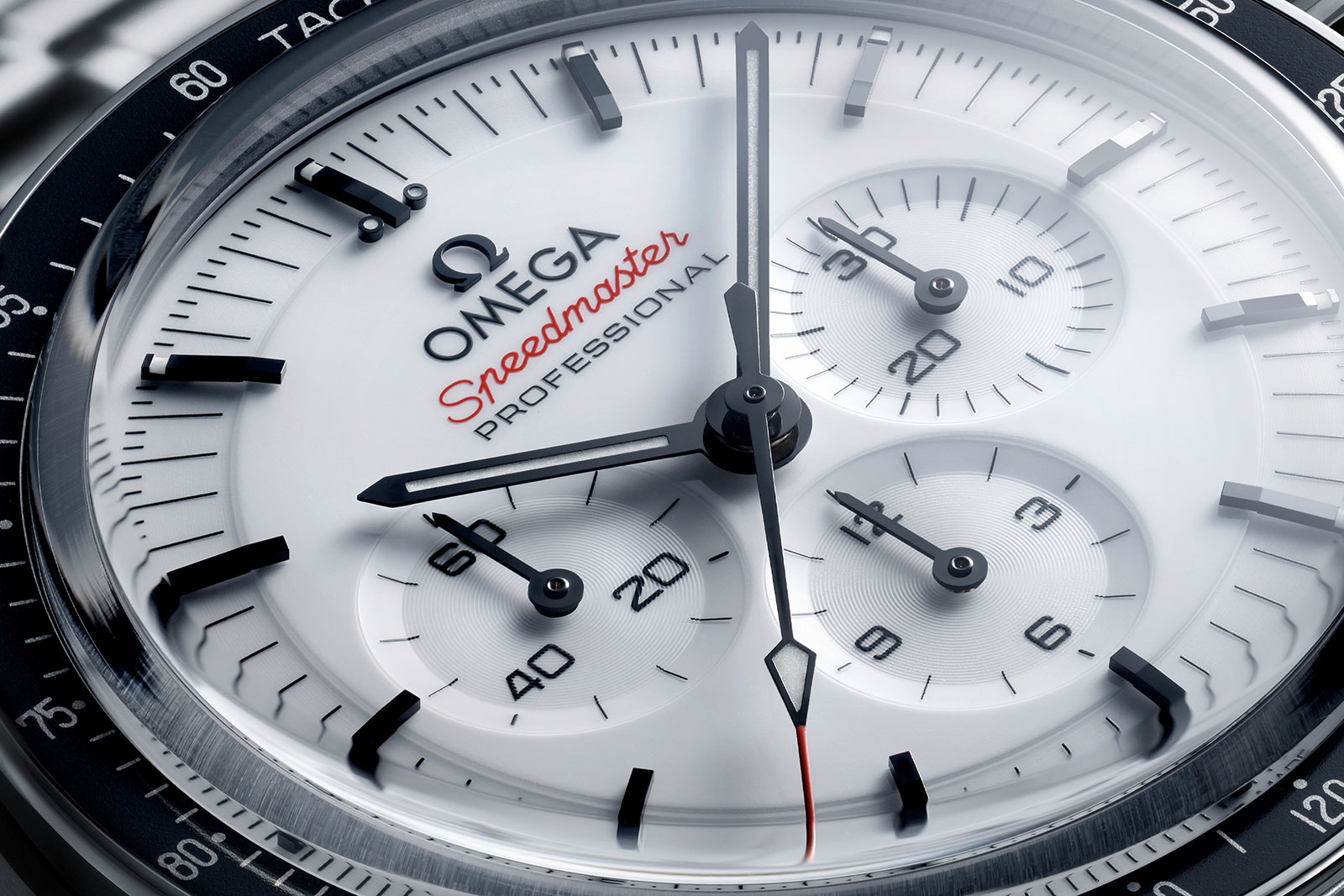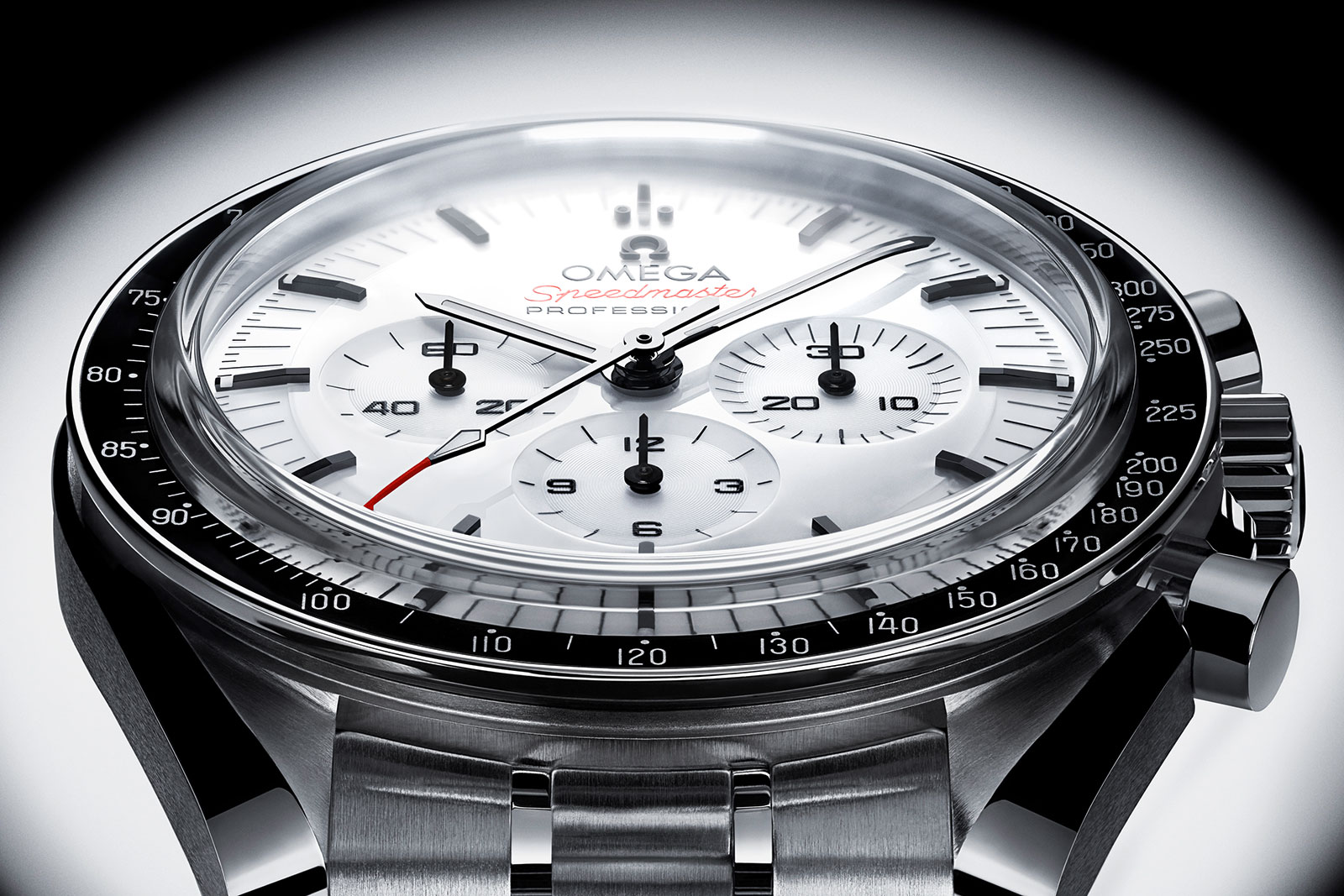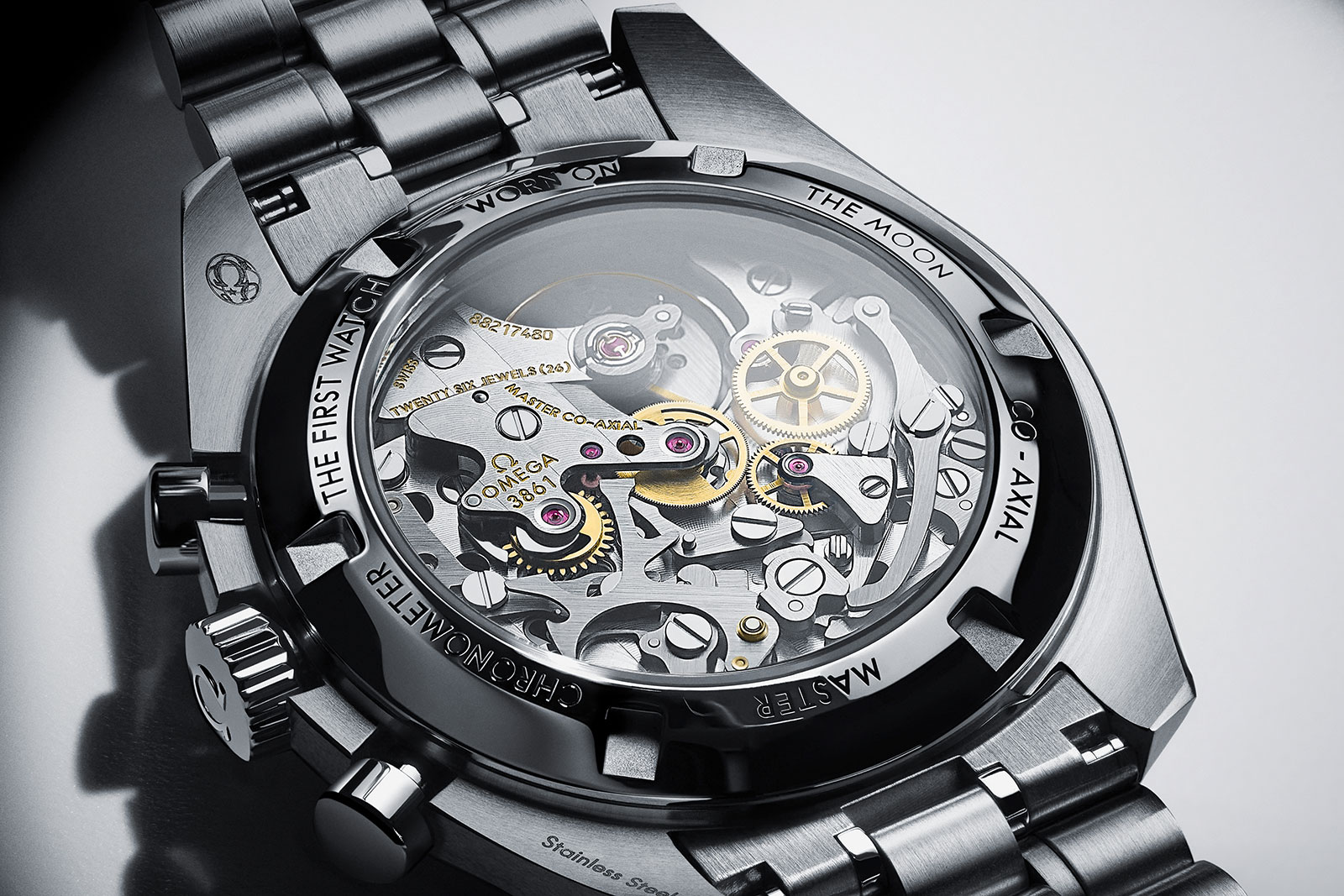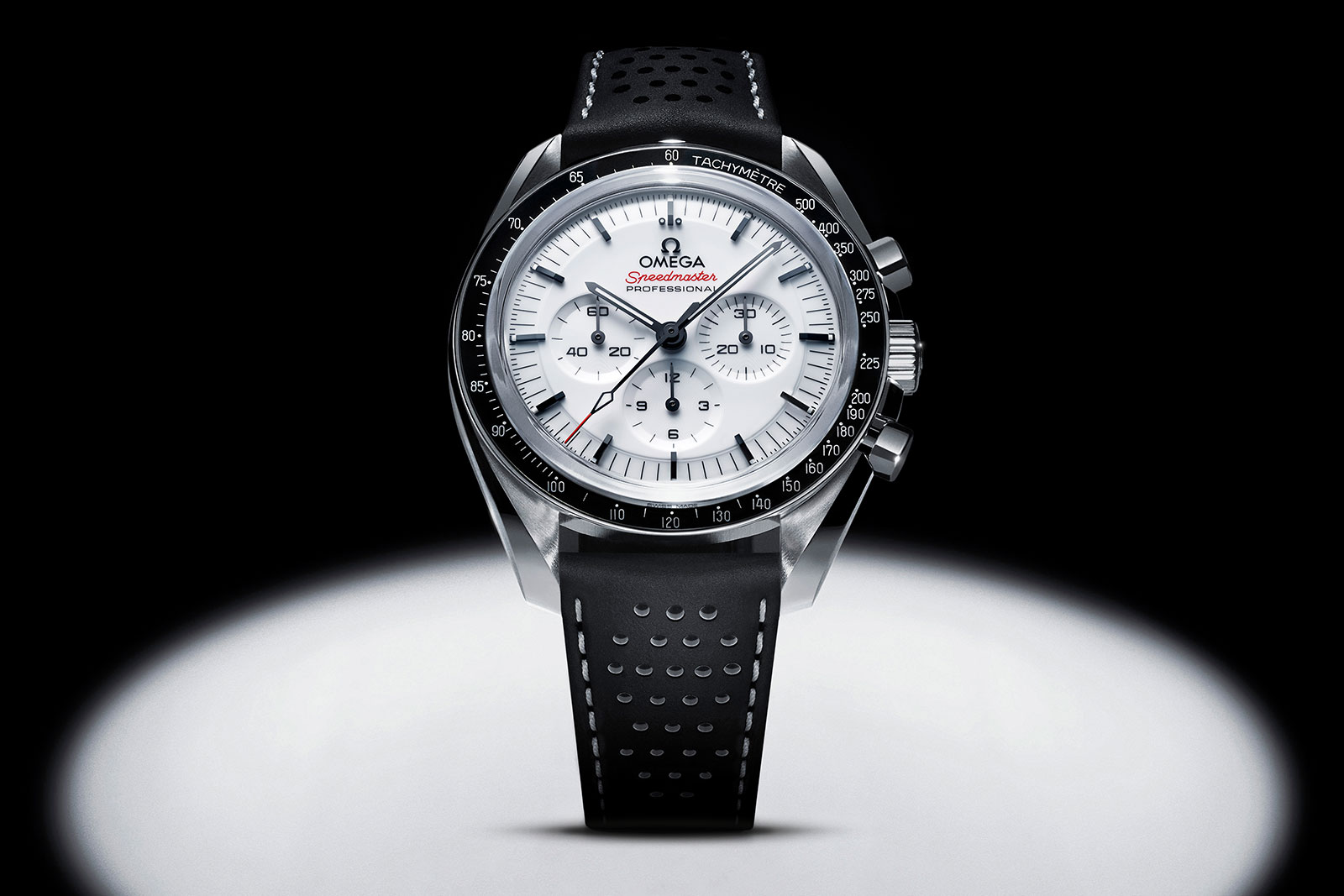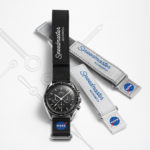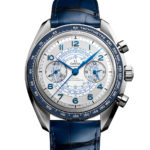Louis Vuitton Introduces Tourbillon with Plique-à-Jour Enamel Dial
Translucent enamel akin to stained glass.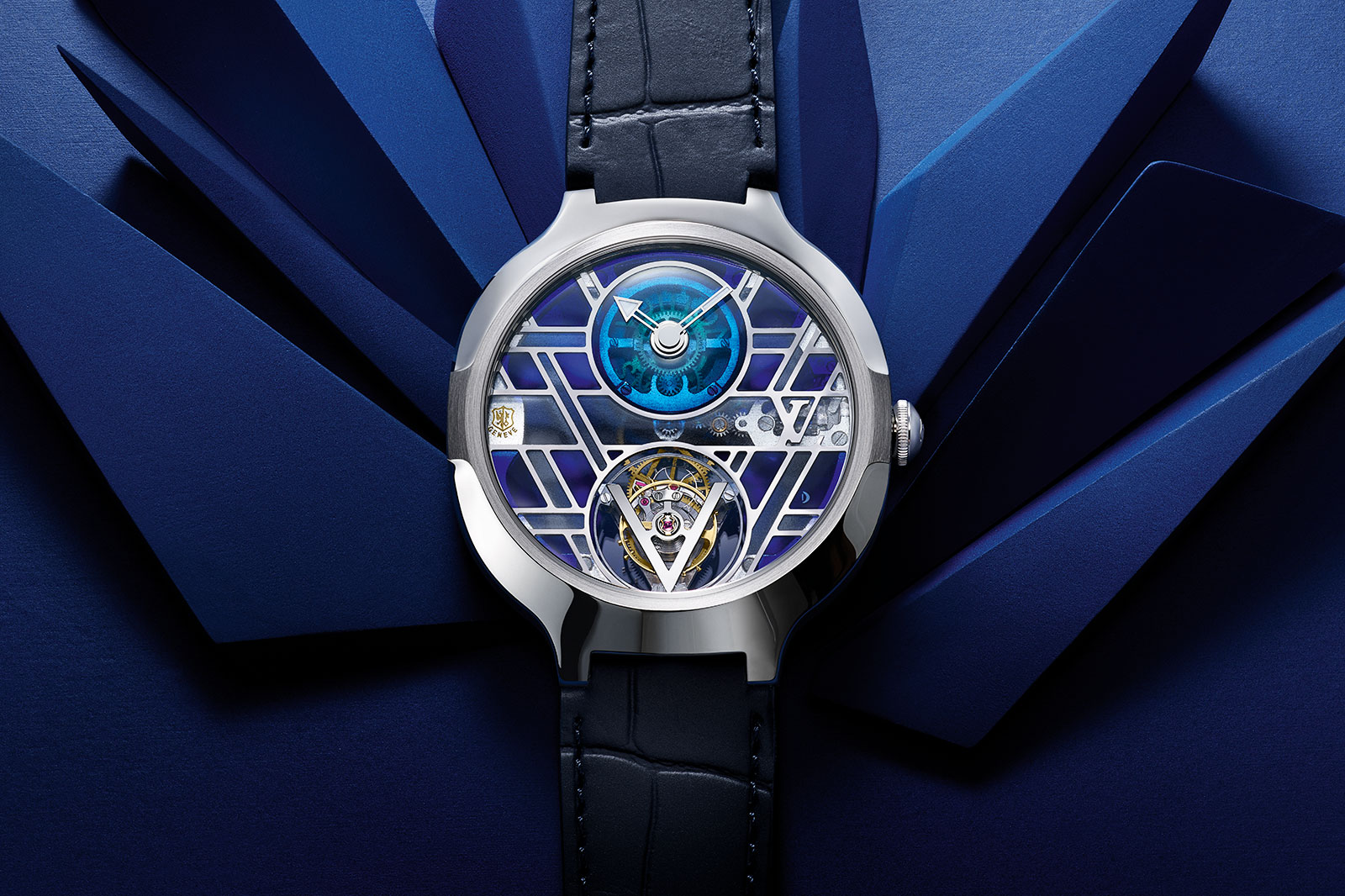
Making full use of its recently established enamel workshop, Louis Vuitton debuts the Voyager Flying Tourbillon Poinçon de Genève Plique-à-Jour.
Equipped with a skeleton tourbillon movement bearing the Geneva Seal, the new Voyager features a dial of translucent enamel in a gold lattice that is similar to stained glass.
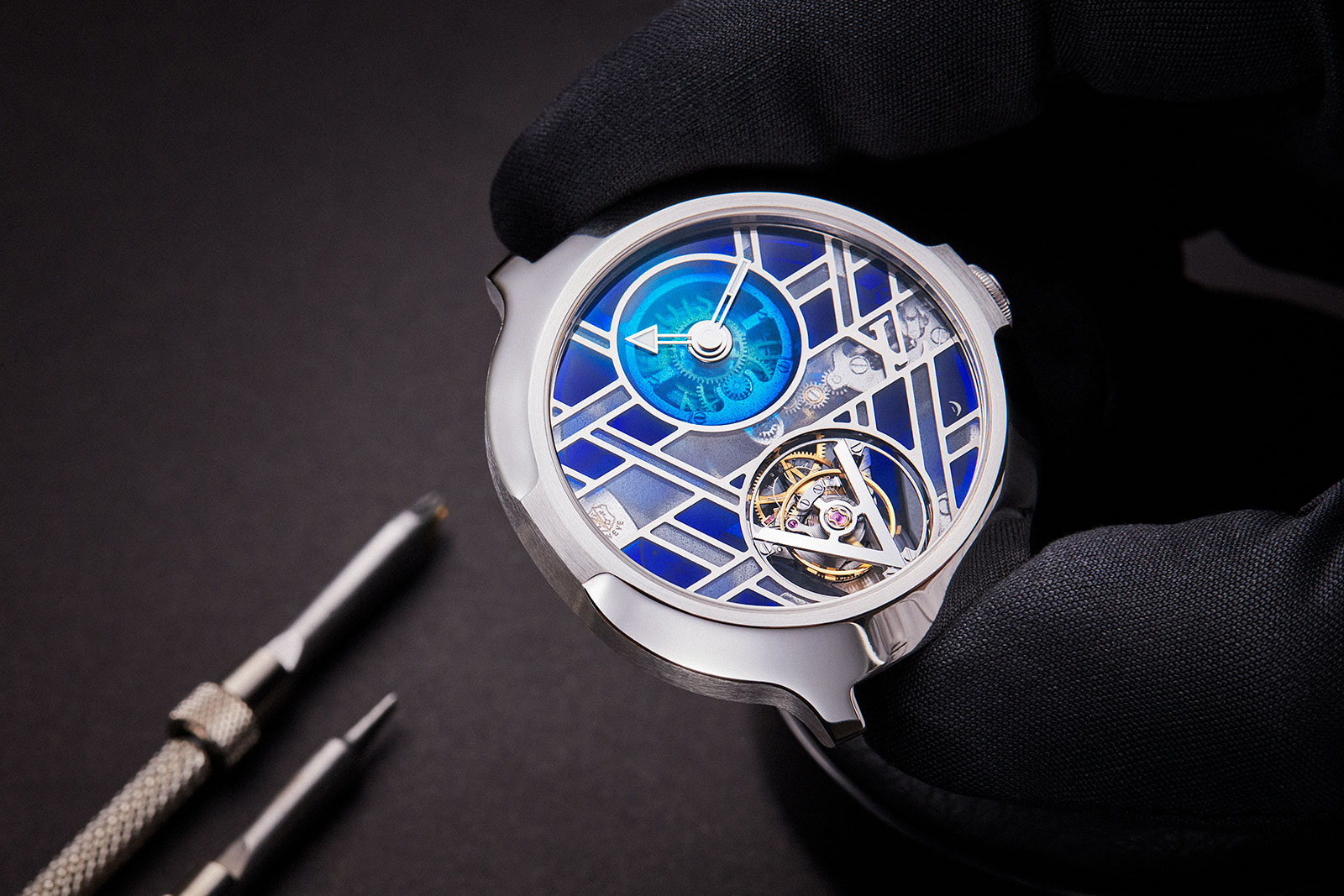
Initial thoughts
The Voyager tourbillon was unveiled in its original format in 2016. I examined the watch at the time, and came away impressed by both the design and finishing, though I felt it was pricey.
The case was elegantly proportioned and sat particularly well on the wrist, being just over 9 mm tall. And the movement was surprisingly airy while having a high level of decoration equivalent to that found in establishment haute horlogerie names.
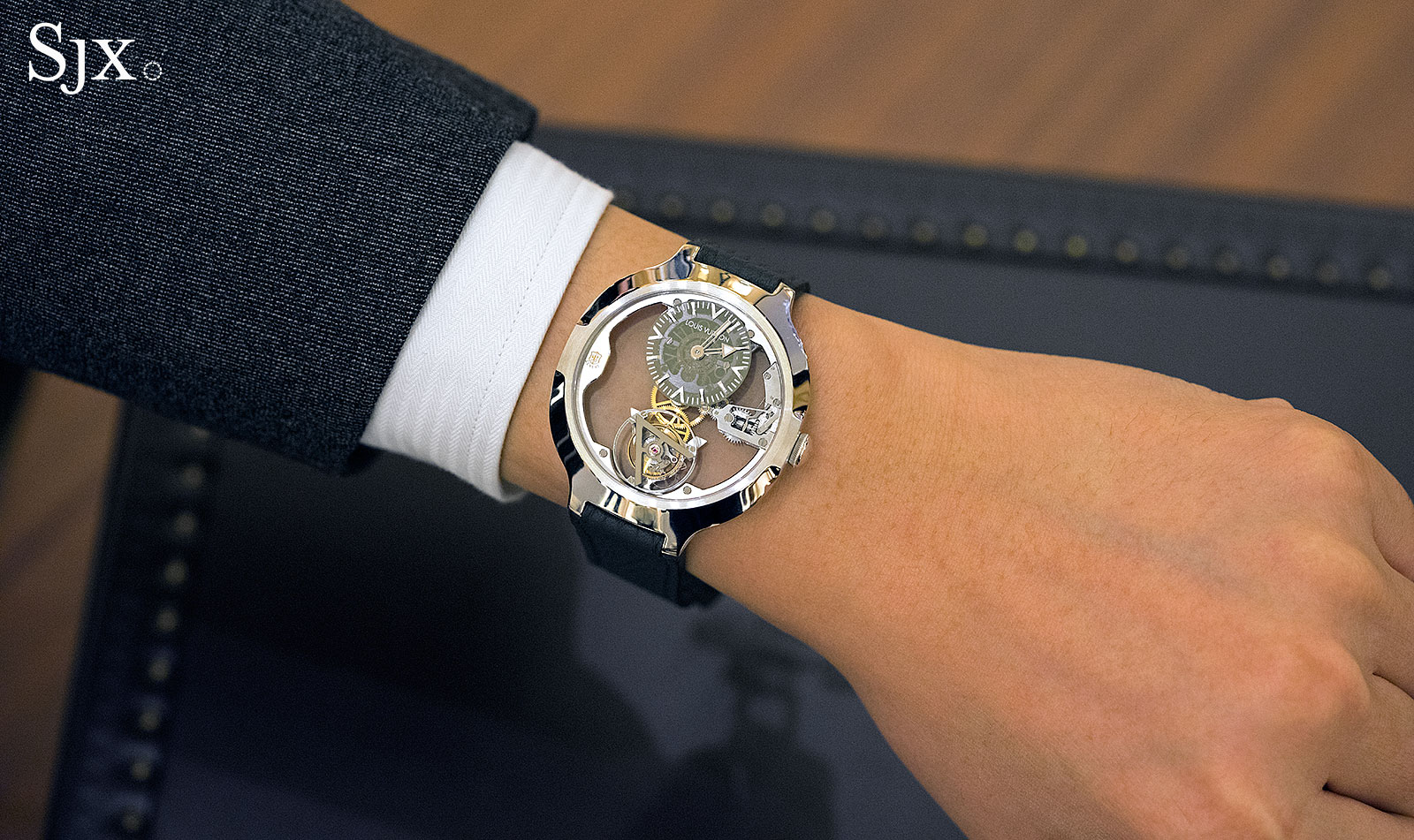
The plique-à-jour is essentially the same thing but with an enamel dial. The thickness of the dial adds to the case height, bringing it to over 11 mm, so the new tourbillon doesn’t have the slimness but it remains an elegant watch.
The artisanal dial does add another level of appeal, particularly since this enamel technique is not often used in watches, particularly on the large surface of entire dial. Personally I would have preferred colours other than blue and grey for the enamel, but geometric, repeating “V” motif of the dial is attractive.

As for the price, well, this is an expensive watch, though arguably not as much as in 2016.. Louis Vuitton has come a long way since as a watchmaker, with the brand having gained enough technical know-how to be credible.
The new Voyager tourbillon can compete with the best of the industrial-artisanal brands, like Vacheron Constantin, in terms of quality, but the brand name is still a hurdle.
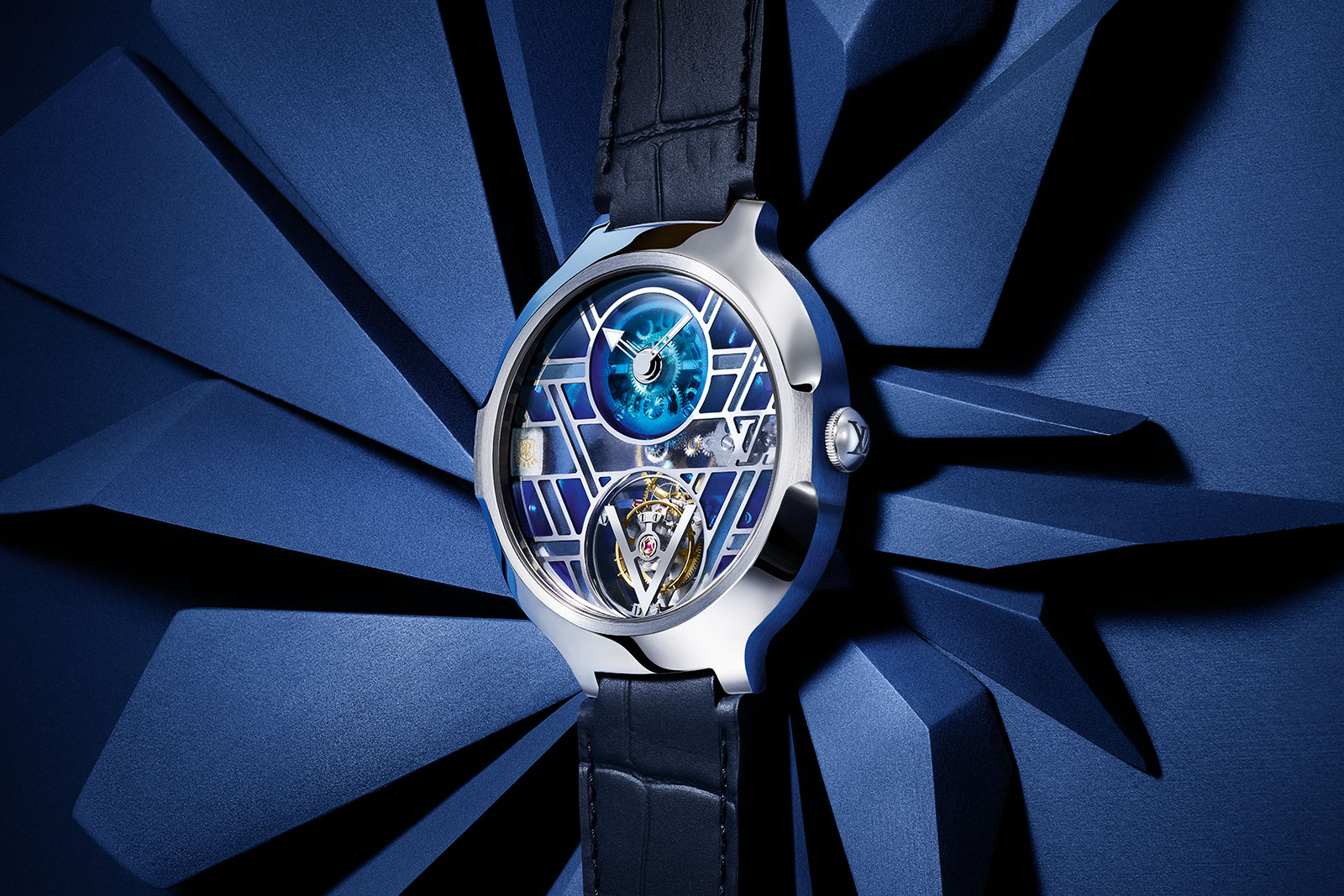
See-through enamel
The new Voyager tourbillon is all about the dial, which is done in-house at the enamel workshop that was established just over a year ago. Made of white gold, the dial is an open-worked lattice in a repeating “V” that gives it an Art Deco aesthetic.
Each of the cells of the lattice are then carefully filled with enamel in shades of gradient blue. There is no backing on the dial, so the enamel is carefully applied such that it’s suspended between the borders of each cell.
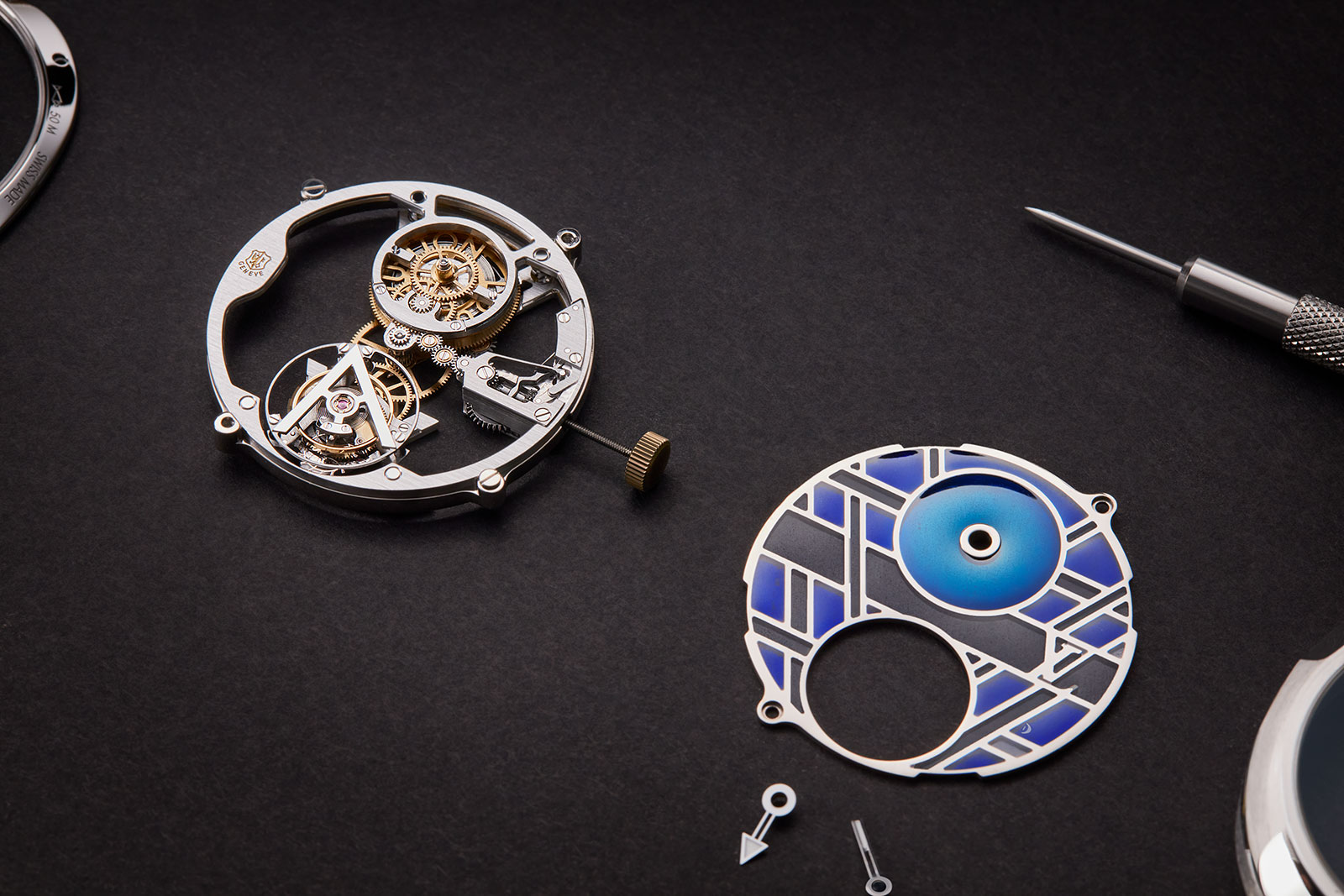
Several layers are applied to build up the enamel in each cell, with each layer requiring a separate firing in an oven. In all, the dial requires five to six layers and firings, a process that needs some 100 hours according to Louis Vuitton.
But the most impressive detail on the dial is arguably the ring for the canon pinion that holds the hands. Its location is fixed due to the position of the hands, yet the ring is set in place by hand and secured only by enamel, without any mechanical support.
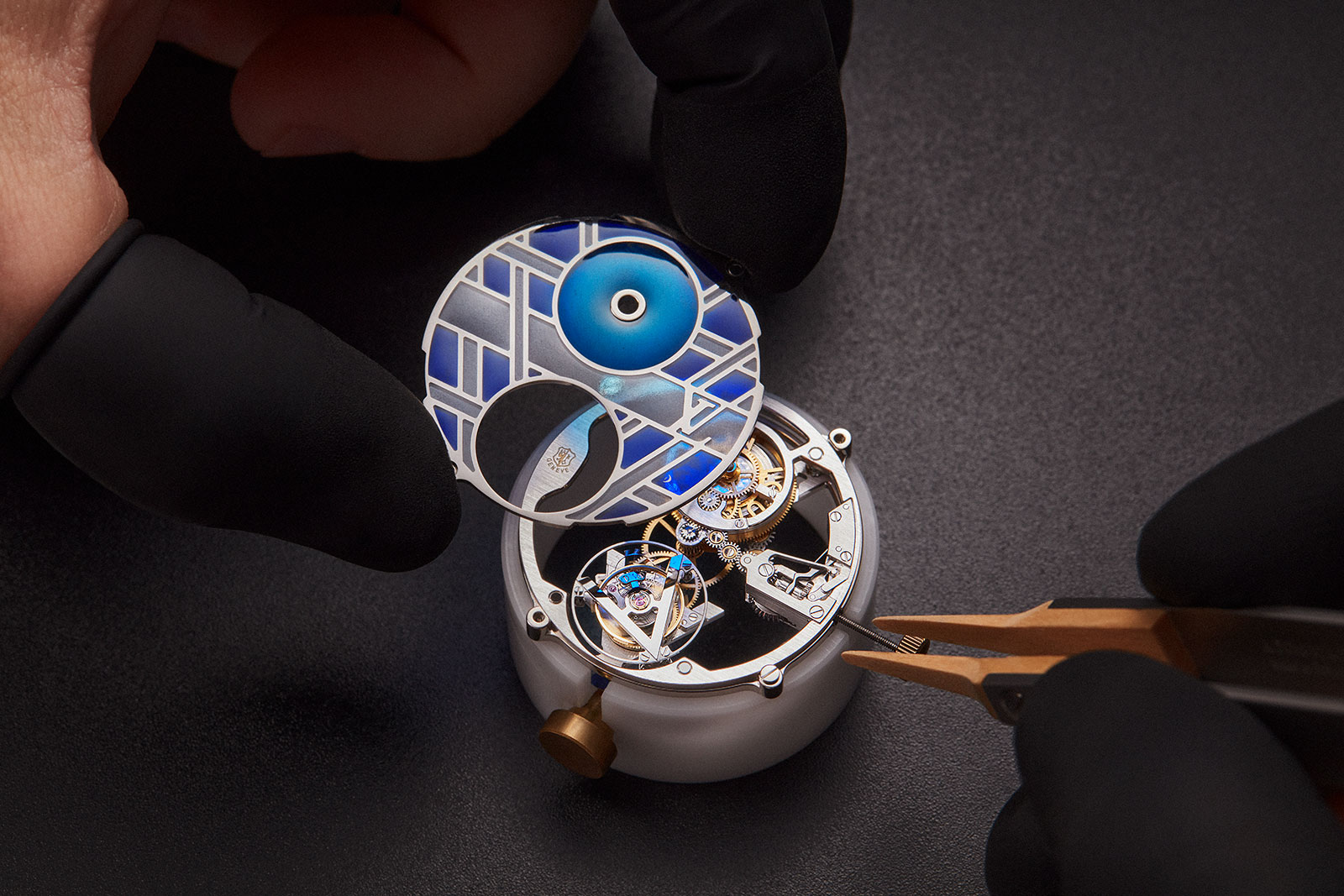
The nature of plique-à-jour demands substantial thickness in order for the dial to be stable. As a result, the new Voyager tourbillon is substantially thicker than the original model without a dial. While that was 9.1 mm high, this is 11.68 mm, with the increased height almost entirely due to the dial.
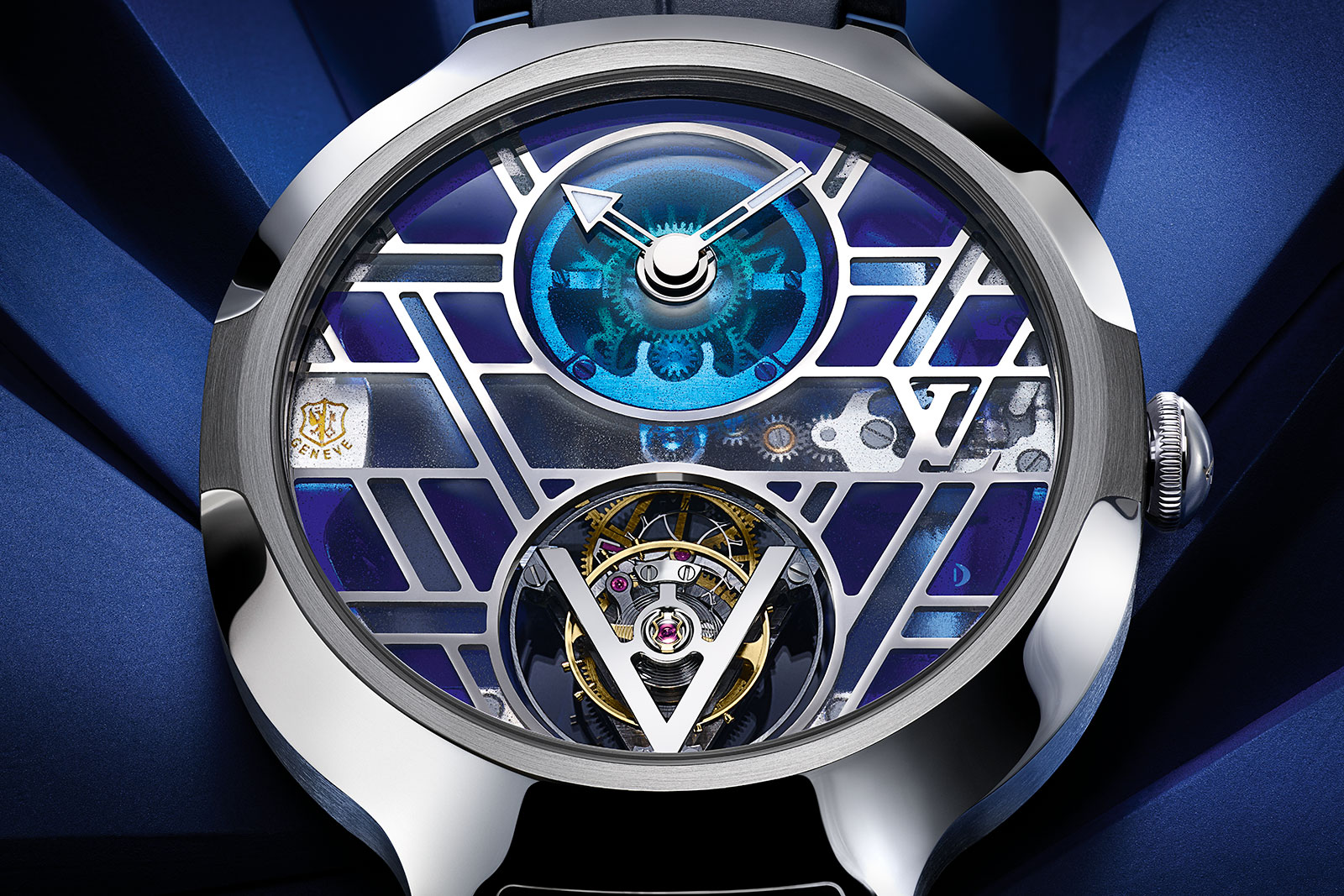
Though thicker, the platinum case remains the 41 mm in diameter. The case is almost cushion shaped with a round crystal and dial. Typical of the Voyager design, the case has no bezel, but instead a flat plane around the crystal with flared “ears” at both three and nine o’clock.
Visible under the plique-à-jour dial is the LV 104, a manual-wind movement with a flying tourbillon developed by Louis Vuitton subsidiary La Fabrique du Temps (LFT). Based on LFT’s past tourbillon calibres, the LV 104 has a vertical layout familiar in tourbillon movements that results in a vertically symmetrical appearance.
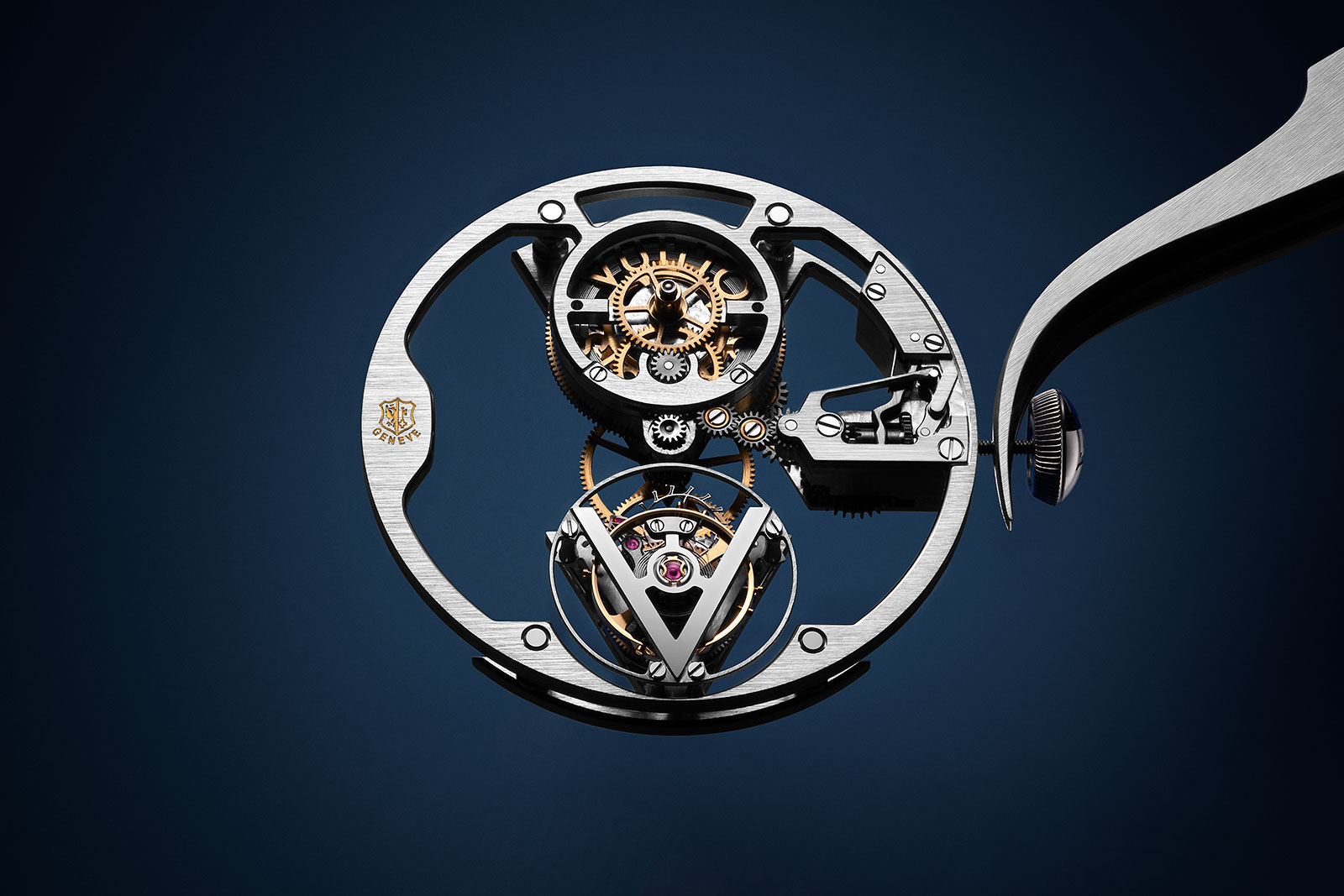
The barrel sits at 12 o’clock, the flying tourbillon is at six, while the going train is in between. On the front the moving parts appear to be floating, secured by barely any bridges.
Over on the reverse, the bridges that underpin the movement are visible. Echoing the geometric “V” motif of the dial, the bridges are open worked to form the same letter.
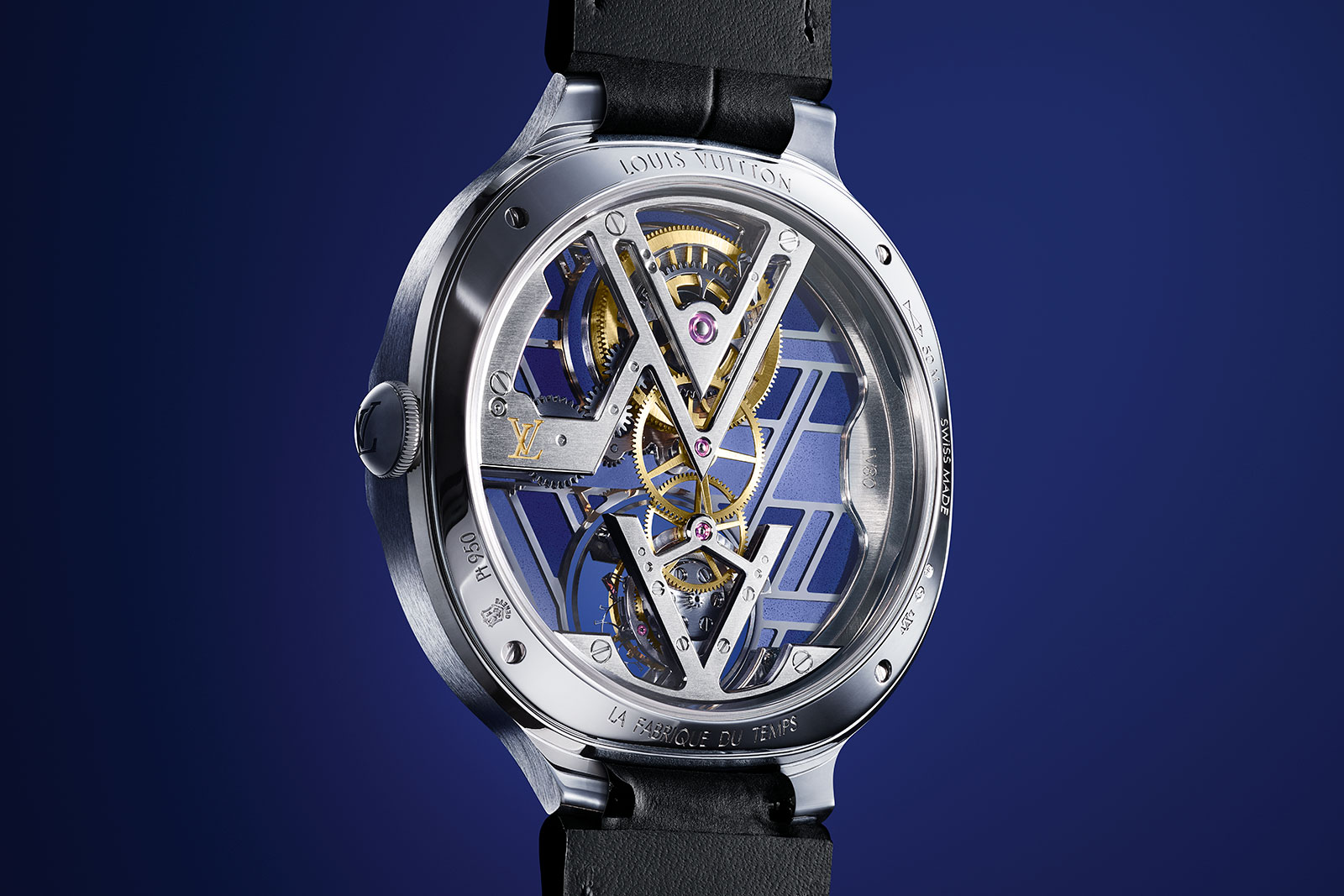
Importantly, the movement is hallmarked with the Poinçon de Genève, also known as the Geneva Seal. A mark of both decorative and functional quality, the Poinçon de Genève reflects the high standard of finishing, which includes hand-finished bevelling on the bridges and chamfered spokes on the wheels.
The decoration is comparable to that found in movements from Vacheron Constantin and Audemars Piguet, although the decorated surfaces are admittedly few given the skeletonised movement.
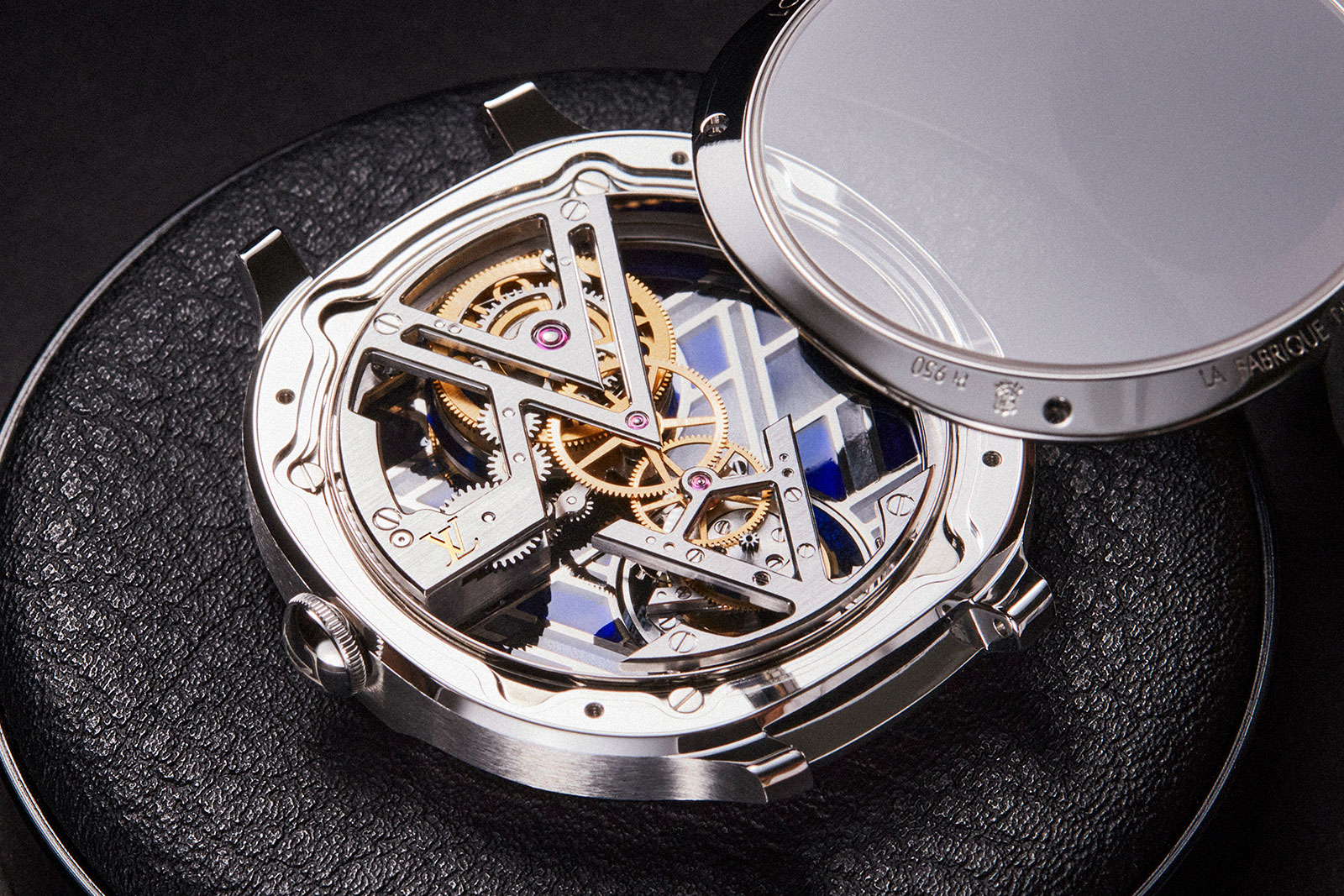
Key specs and price
Louis Vuitton Voyager Flying Tourbillon Poinçon de Genève Plique-à-Jour
Ref. Q7EBBY
Diameter: 41 mm
Height: 11.68 mm
Material: Platinum and 18k white gold
Crystal: Sapphire
Water resistance: 50 m
Movement: LV 104
Functions: Hours, minutes, and tourbillon
Frequency: 21,600 beats per hour (3.5 Hz)
Winding: Hand wind
Power reserve: 80 hours
Strap: Leather with platinum folding clasp
Limited edition: No
Availability: At Louis Vuitton boutiques
Price: €275,000 excluding taxes
For more, visit Louisvuitton.com.
Back to top.

